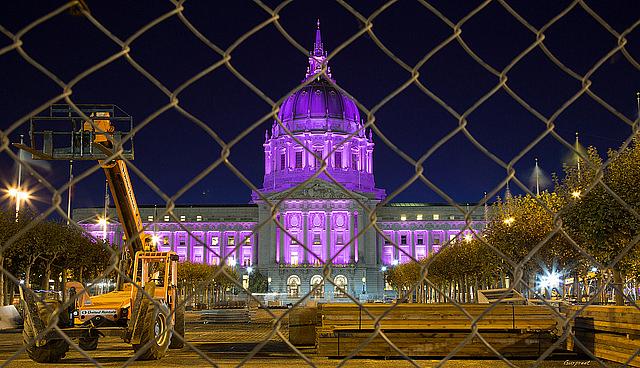Domestic violence, America’s dirty little secret
The National Domestic Violence Hotline defines domestic violence, also known as intimate partner violence (IPV) as “a pattern of behaviors that physically harm, arouse fear, prevent a partner from doing what they wish or force them to behave in ways they do not want. It includes the use of physical and sexual violence, threats and intimidation, emotional abuse and economic deprivation. Many of these different forms of domestic violence/abuse can be occurring at any one time within the same intimate relationship.”
IPV is pervasive, perpetrated on millions of individuals worldwide. In the United States alone, “On average, 24 people per minute are victims of rape, physical violence or stalking by an intimate partner — more than 12 million women and men over the course of a year,” according to the hotline.
“One in four women (24.3 percent) and one in seven men (13.8 percent) aged 18 and older in the US have been the victim of severe physical violence by an intimate partner in their lifetime.”
The prosecution of actor O.J. Simpson for the murders of his wife, Nicole Brown Simpson, and Ronald Goldman, is one of the highest profile domestic violence cases in nearly a quarter of a century. Covered by domestic and international media outlets, millions of people watched the social, psychological, political, legal, law enforcement, and personal issues unfold, which for the average victim often can translate into silence, shame, stigma, invisibility, or villainy.
Since the Simpson case, other figures have faced allegations of domestic violence: a high-ranking official in the L.A. County’s prosecutor office; Michael Avenatti, attorney for actress Stormy Daniels; and Ray Rice, a former running back for the Baltimore Ravens.
Although Tarana Burke’s “Me Too” movement helps survivors of sexual violence, its contribution to enhancing awareness of sexual violence against women is unparalleled. Numerous prominent figures in entertainment, corporate America, government, academia, science, and other fields stand accused of using their positions of power for sexual gain.
Farther afield — in the pre-Me Too era — Dominique Strauss-Khan, former managing director of the International Monetary Fund, faced accusations of sexual assault of a hotel maid. He subsequently resigned from his position and settled a civil suit for an undisclosed amount.
It also is not uncommon to see domestic disputes spill over into public spaces. The author has witnessed an elderly gentleman being punched and knocked to the ground by his son; the culmination of a lover’s quarrel, filled with profanity and name-calling, wherein a baseball-bat wielding girlfriend chased her boyfriend, and pounded on his car as he leapt into it and sped away. Yet another involved a public official and a public employee — both men, who were aggressively challenged — one in a public meeting, the other, at his workplace — by their angry, estranged wives.
Historically, men’s use of violence against women has been codified in law or supported by the culture and society in many countries and regions of the world. According to the Criminal Justice Institute, in America, “It was not until the 1870s that the first states banned a man's right to beat his family. … By the 1980s most states had adopted legislation regarding domestic violence.”
In 1994, Congress passed the Violence Against Women Act and reauthorized it January 2019 in a short-term spending bill.
NDVH calls domestic violence “America’s dirty little secret.” According to the Los Angeles County Health Indicators for Women, 2017 report, in Los Angeles County—population 10.1 million people--nearly 17 percent of adult women have reported being victims of domestic violence.
Rates vary by race and/or ethnicity. Black women comprise less than 10 percent of the county’s adult female population, yet 25.4 percent report experiencing domestic violence. Latinas are almost half the county’s adult female population, but only 13.1 percent report experiencing domestic violence.
Asian women in Los Angeles County are significantly less likely to experience IPV: 6.9 percent compared to 24 percent for white women — which is less than, but more closely aligned with their 30 percent population share.
Higher percentages of black women in the County report IPV during pregnancy: 4.5 percent versus 2.1 percent for all women in the county. They also visit emergency rooms for IPV at a rate of 14.1 per 100,000, about twice the 7.4 per 100,000 rate for other women.
For assault injuries, black women in the County visit emergency rooms and are hospitalized at exceedingly high rates: 616.7 visits and 42 hospitalizations per 100,000. The rate for all women is 181.4 and 11.7 per 100,000. Black women are three times more likely to die from homicide than all women, 4.3 per 100,000 versus 1.4.
Public health officials and medical professionals now recognize violence and other major factors — education, employment status, income, experience with discrimination — as determinants of a woman’s health. This project for the 2019 California Fellowship will consider these factors and relevant studies, reports and primary sources. The goals are to:
- Learn how to help women who suffer domestic violence;
- Learn how domestic violence is handled by relevant organizations and communities;
- Understand and recommend ways to reduce violence against women; and
- Make community, program, and policy recommendations to end IPV.


